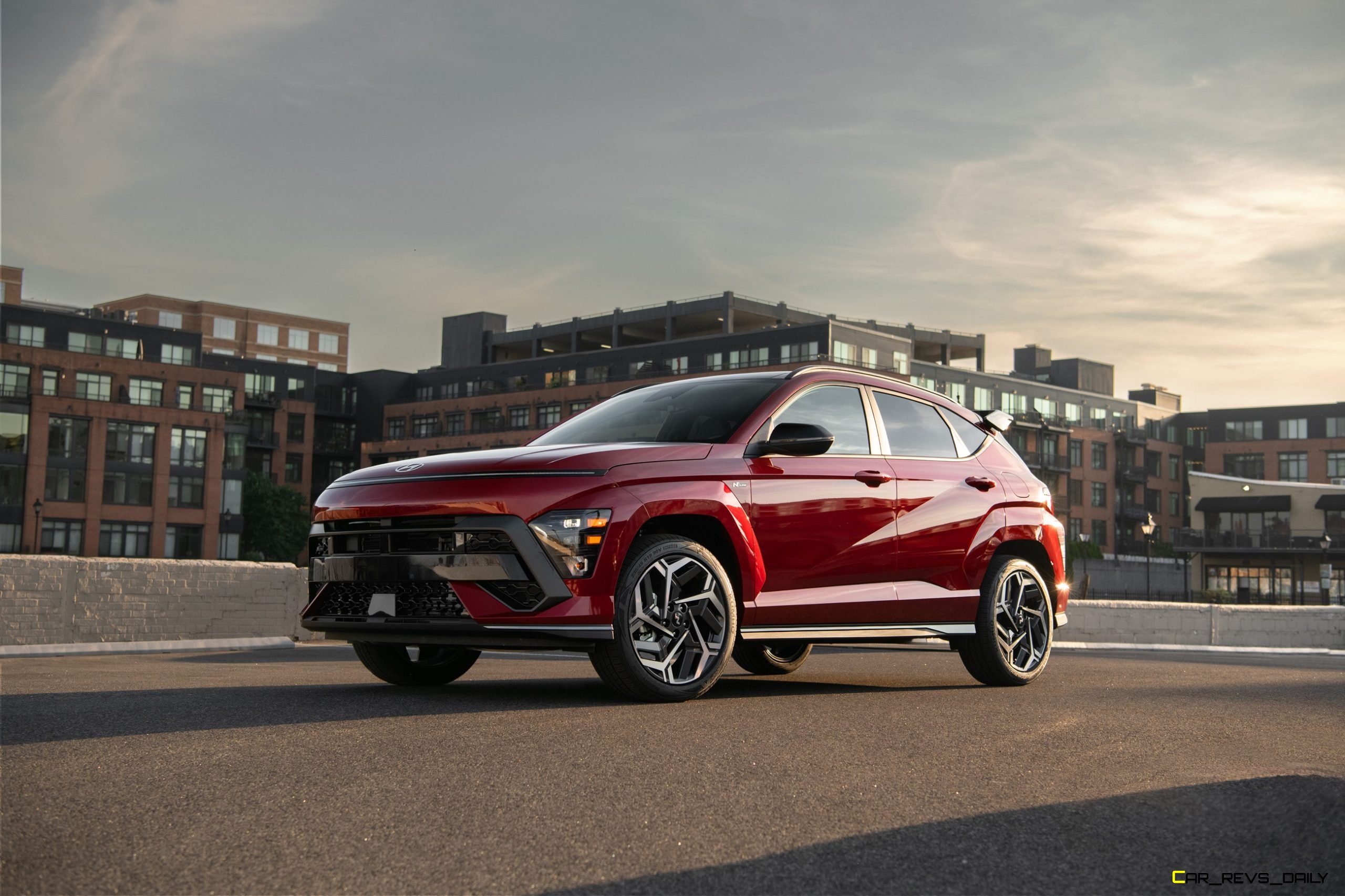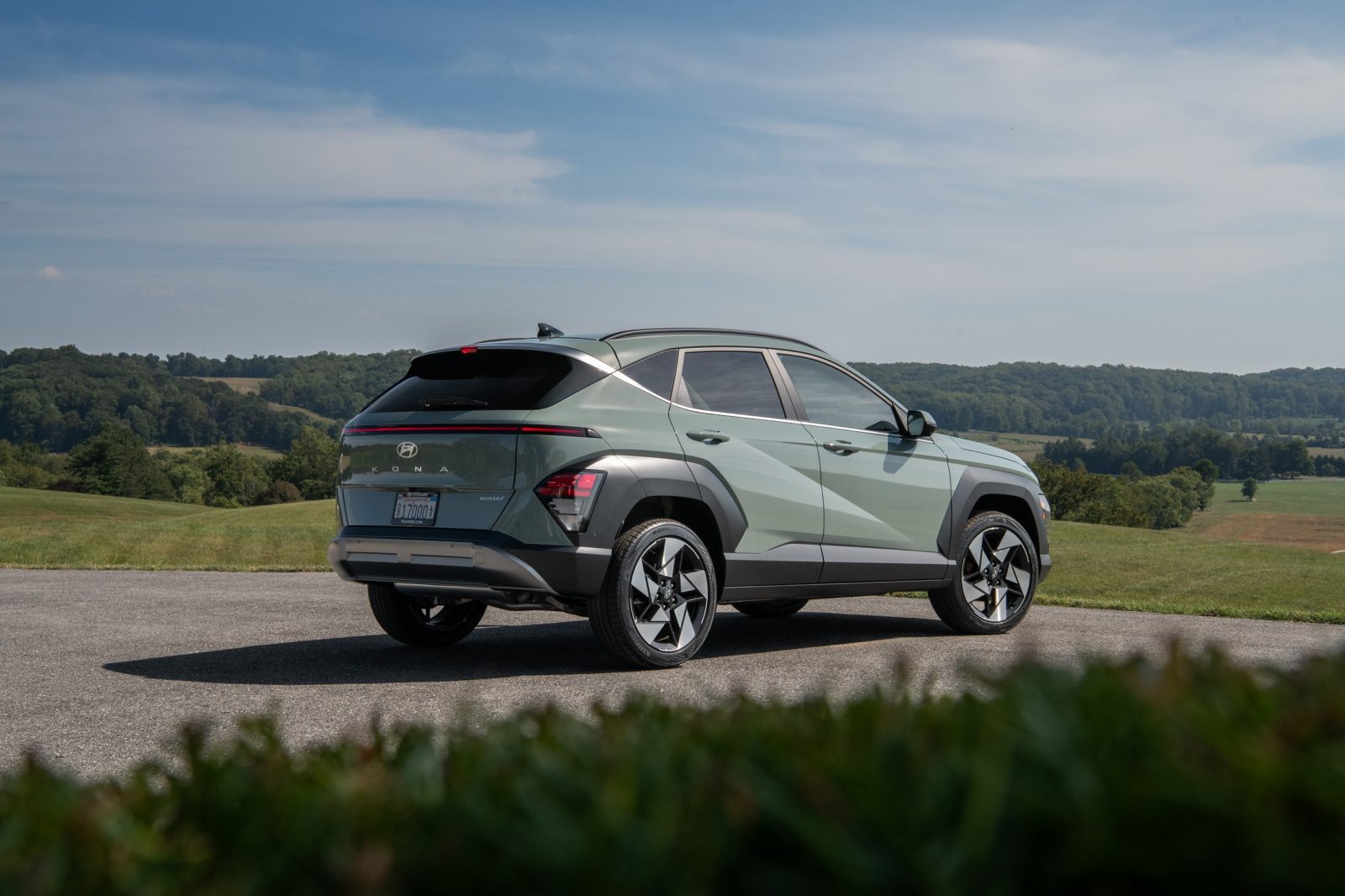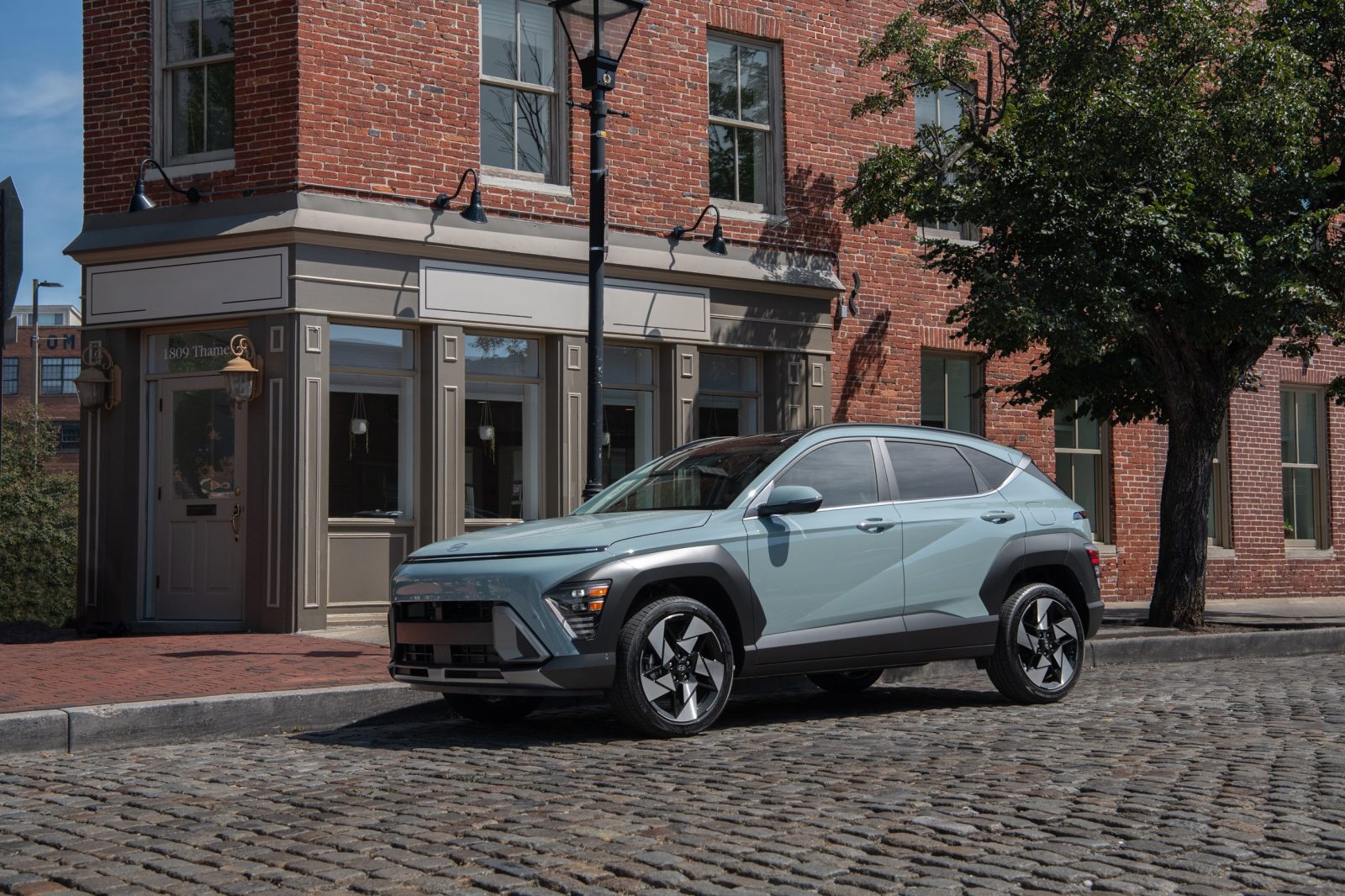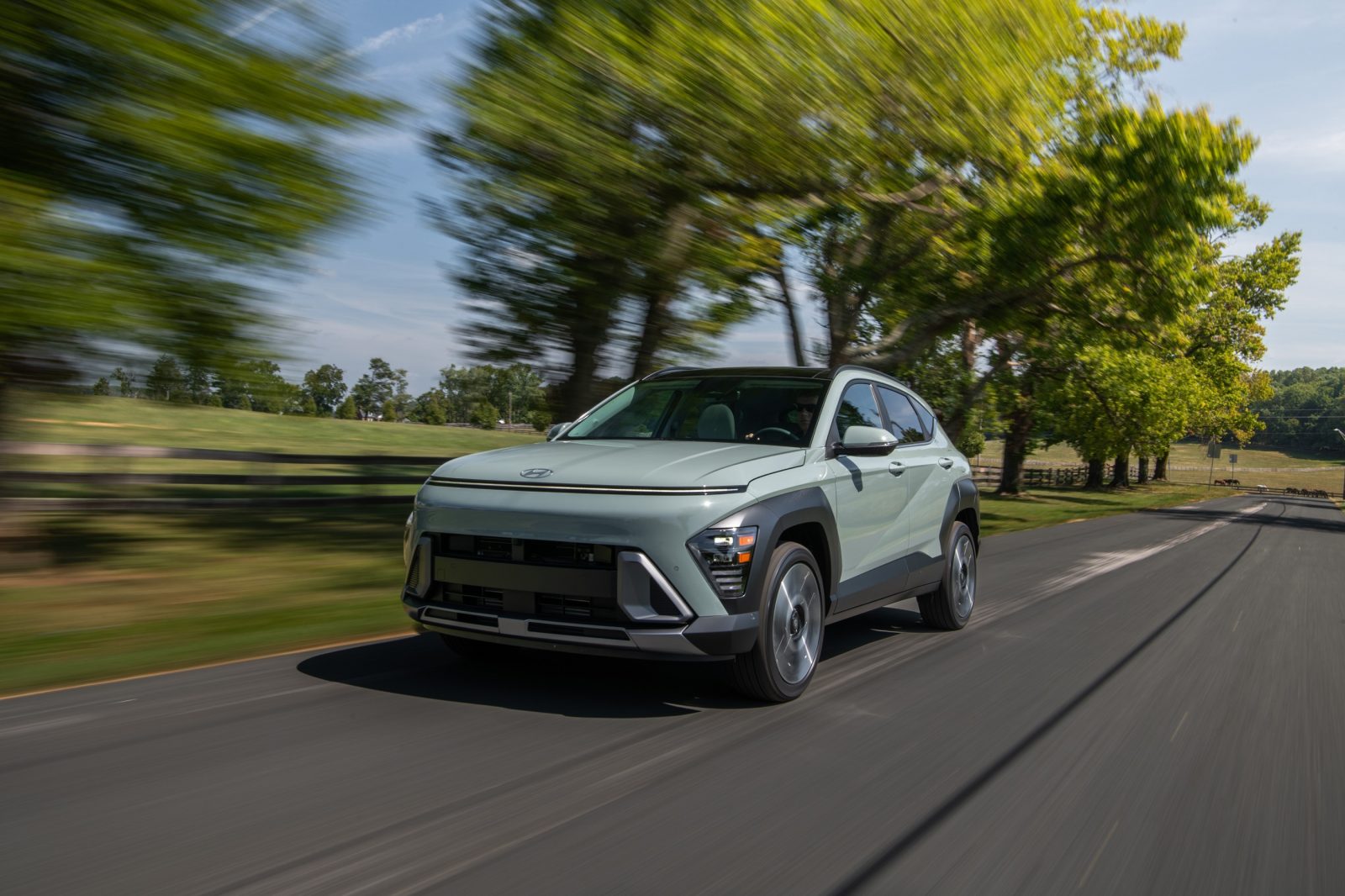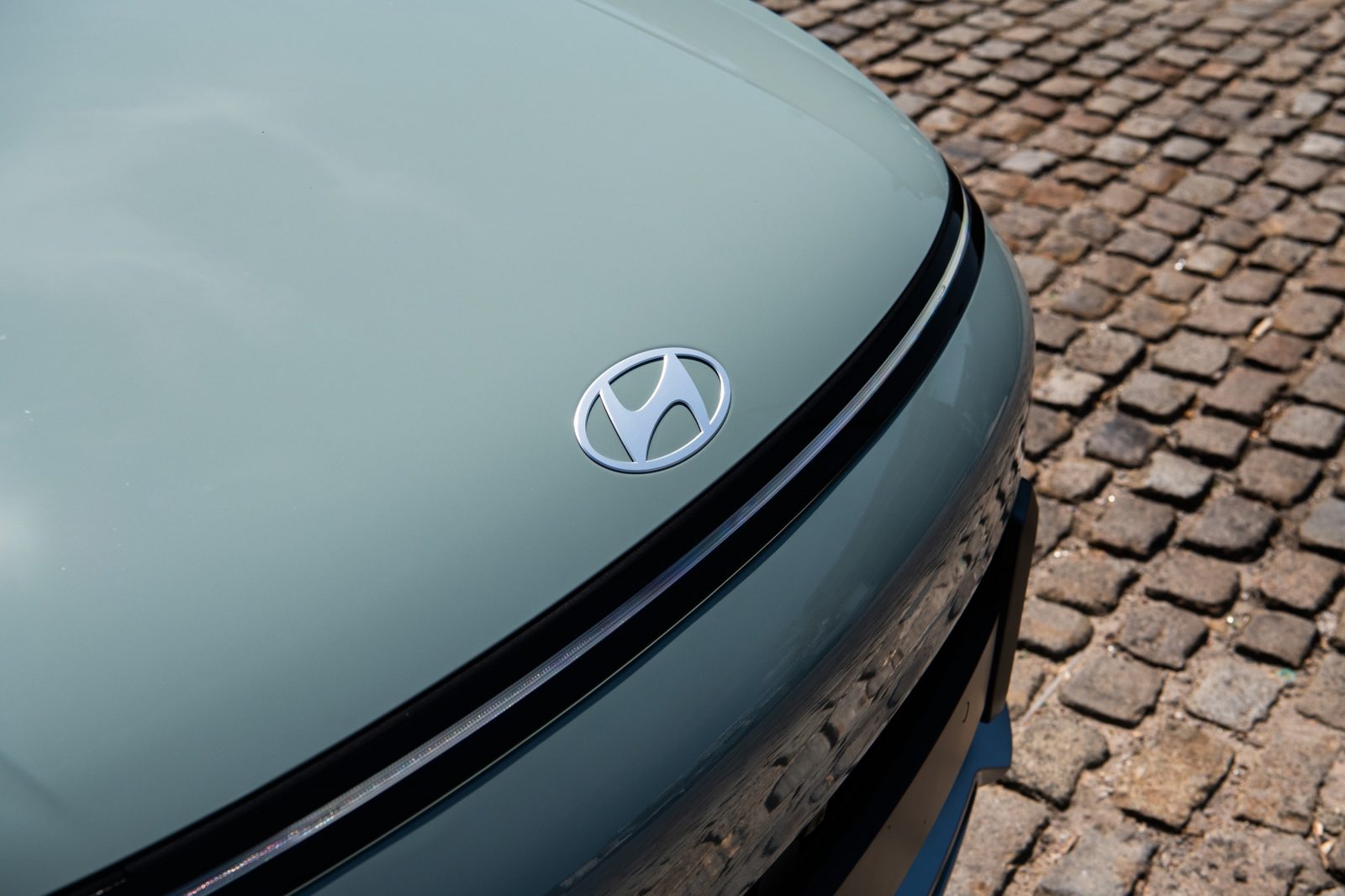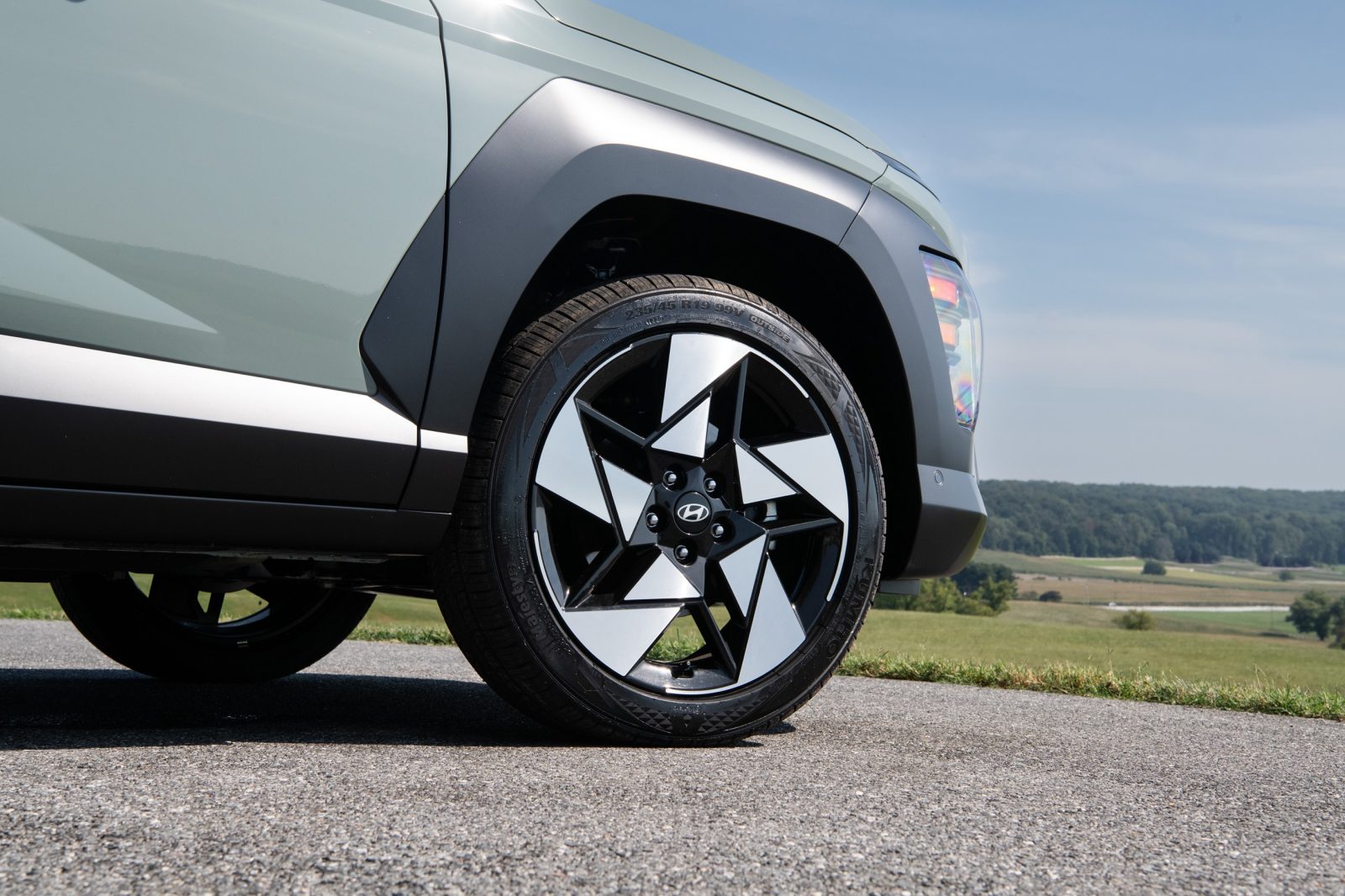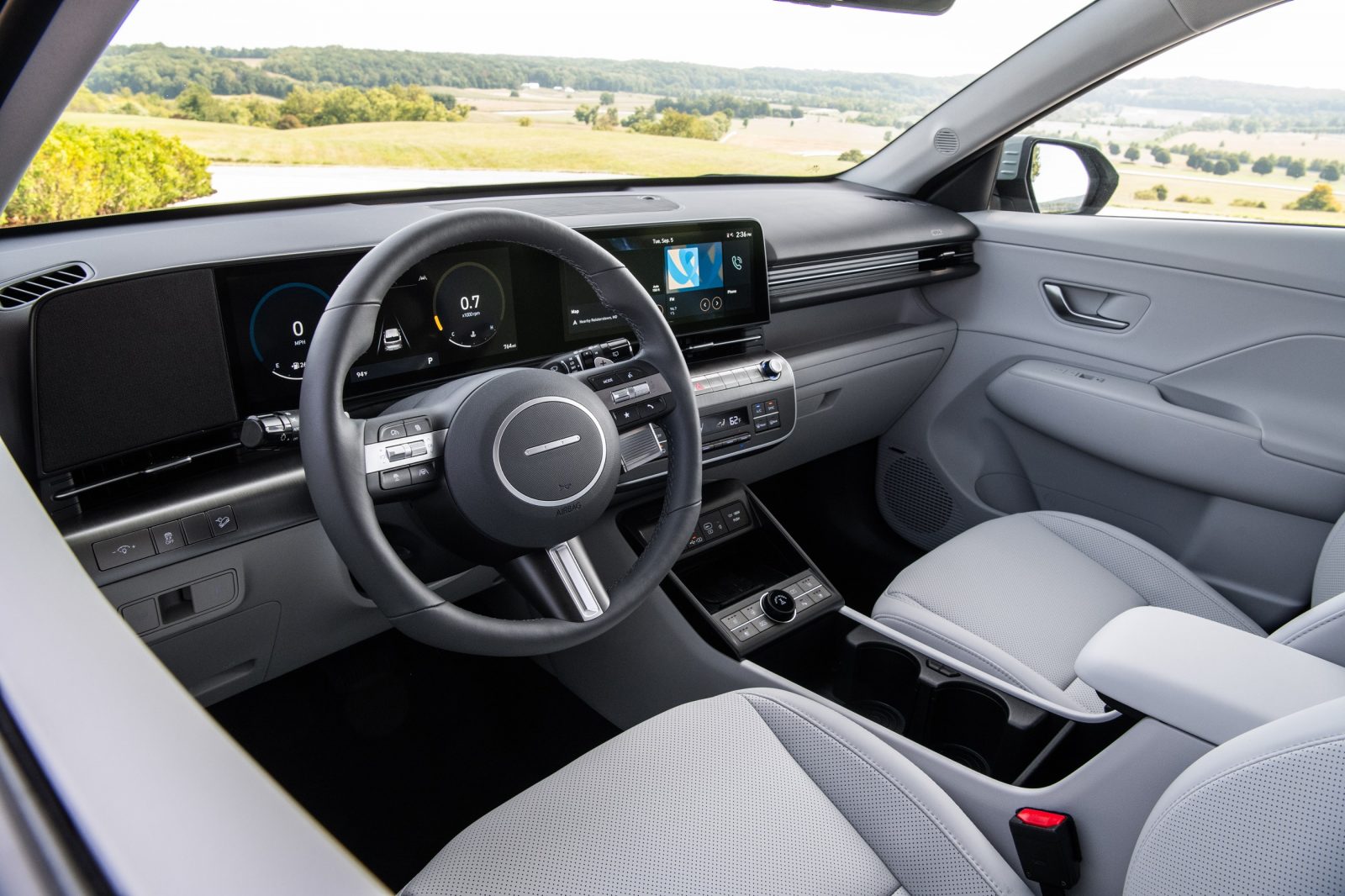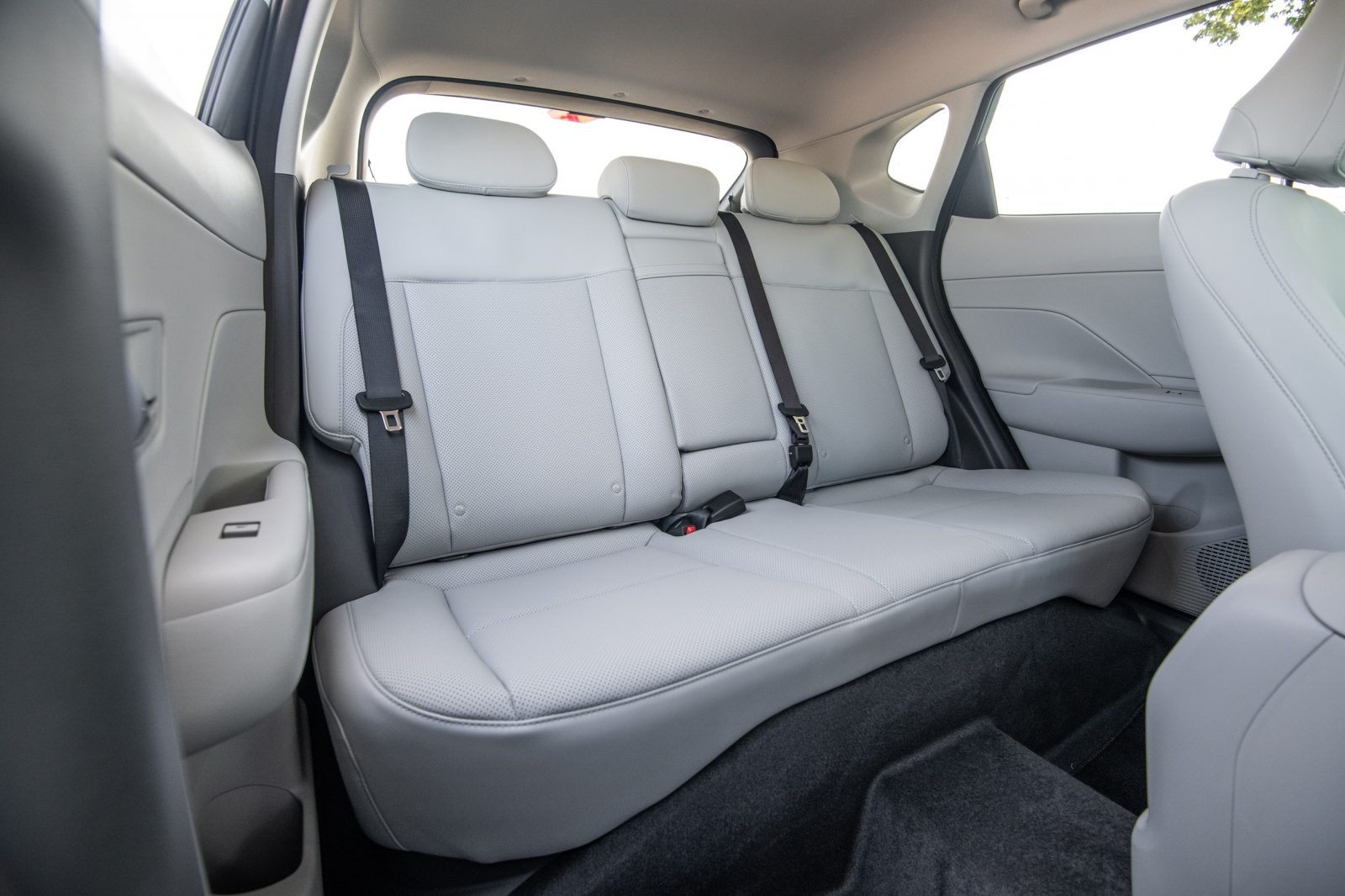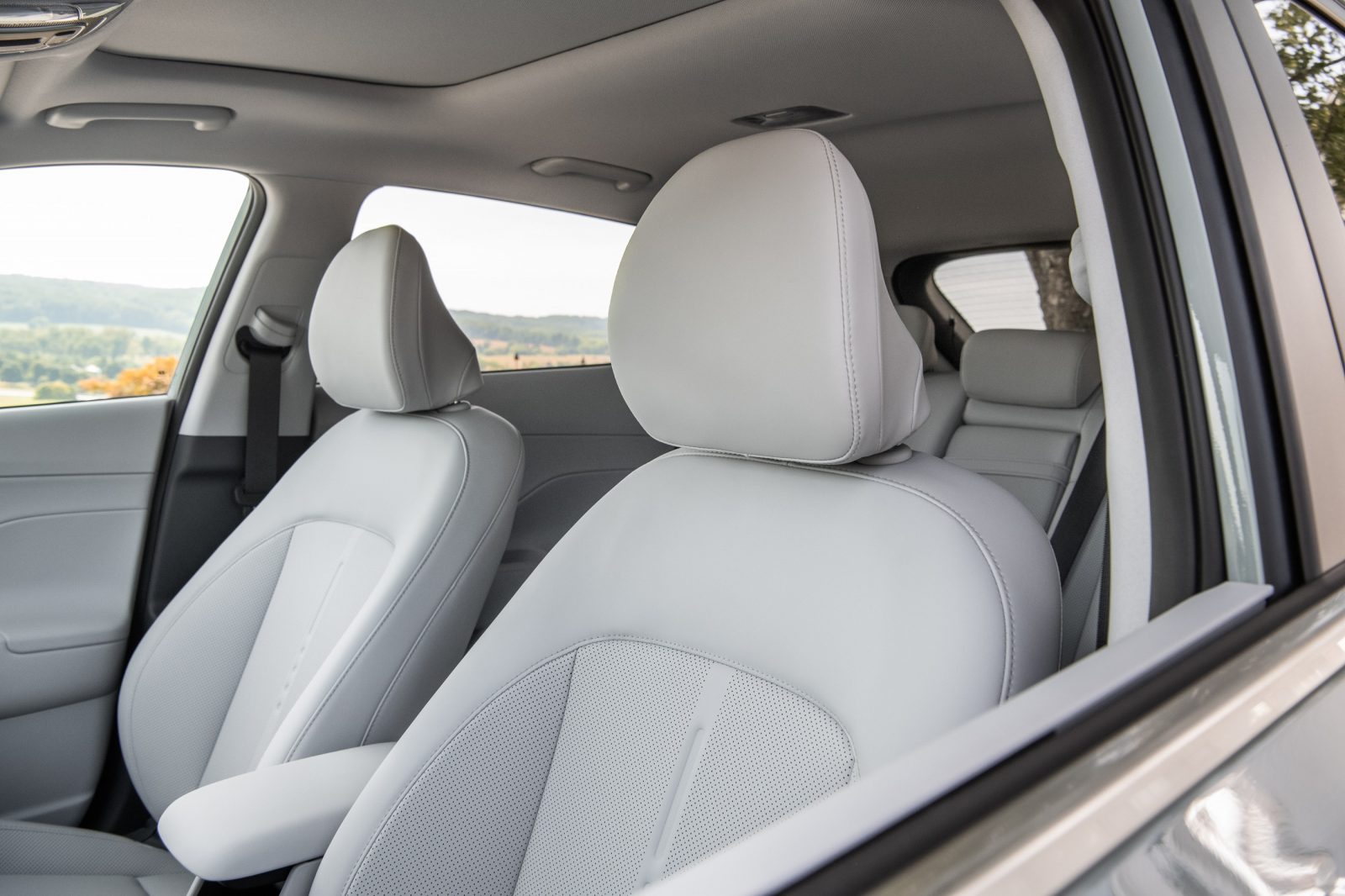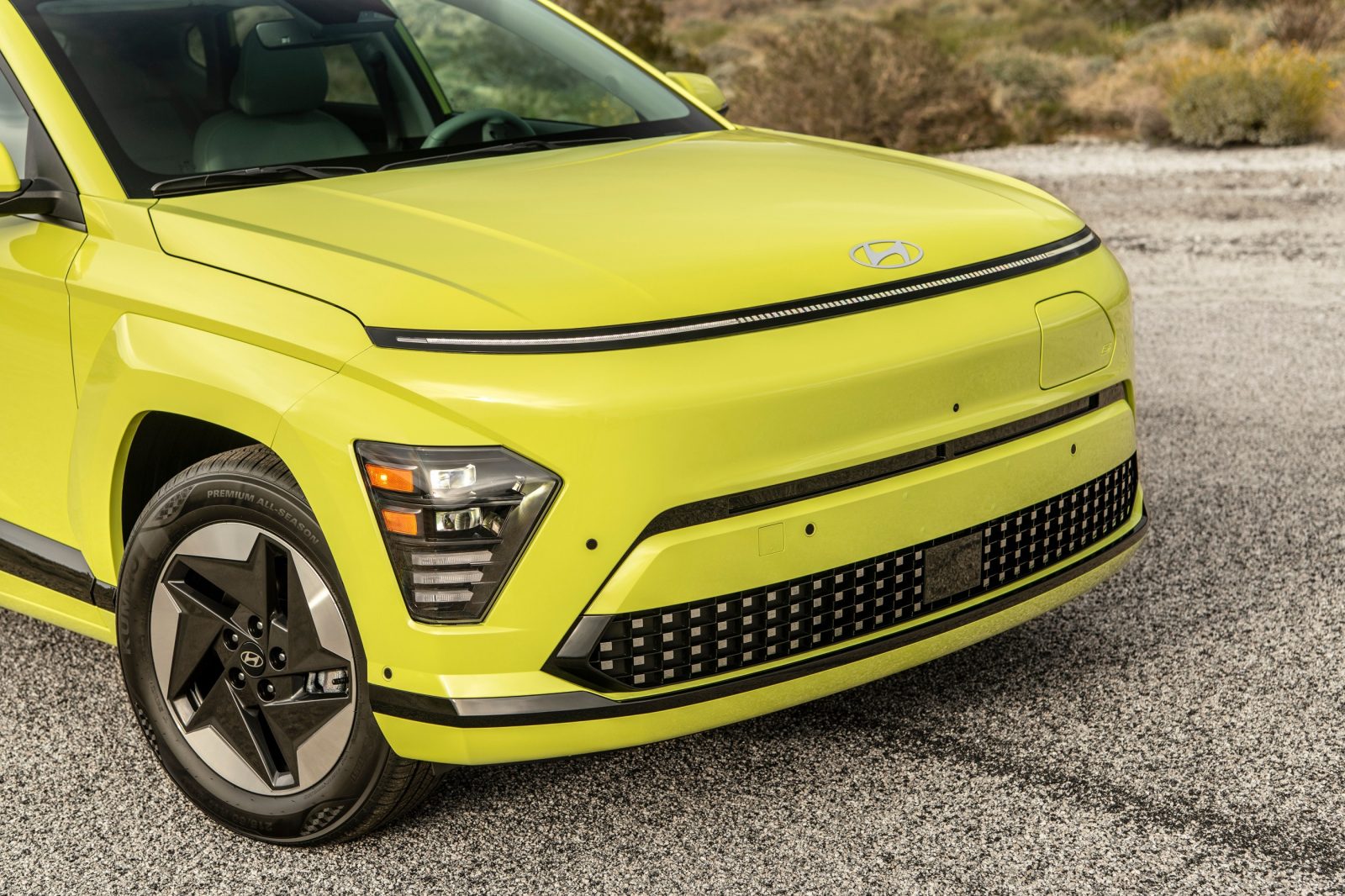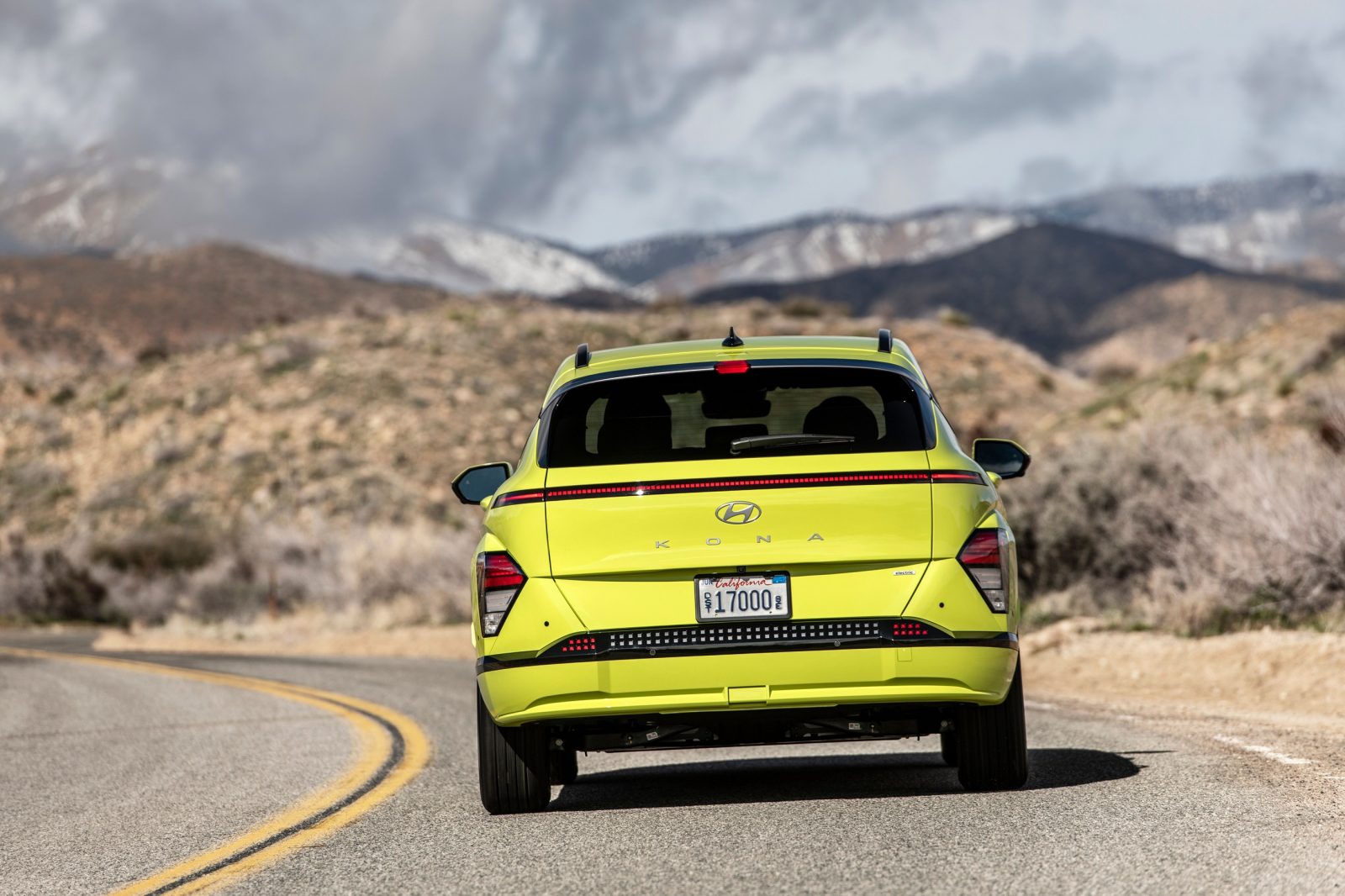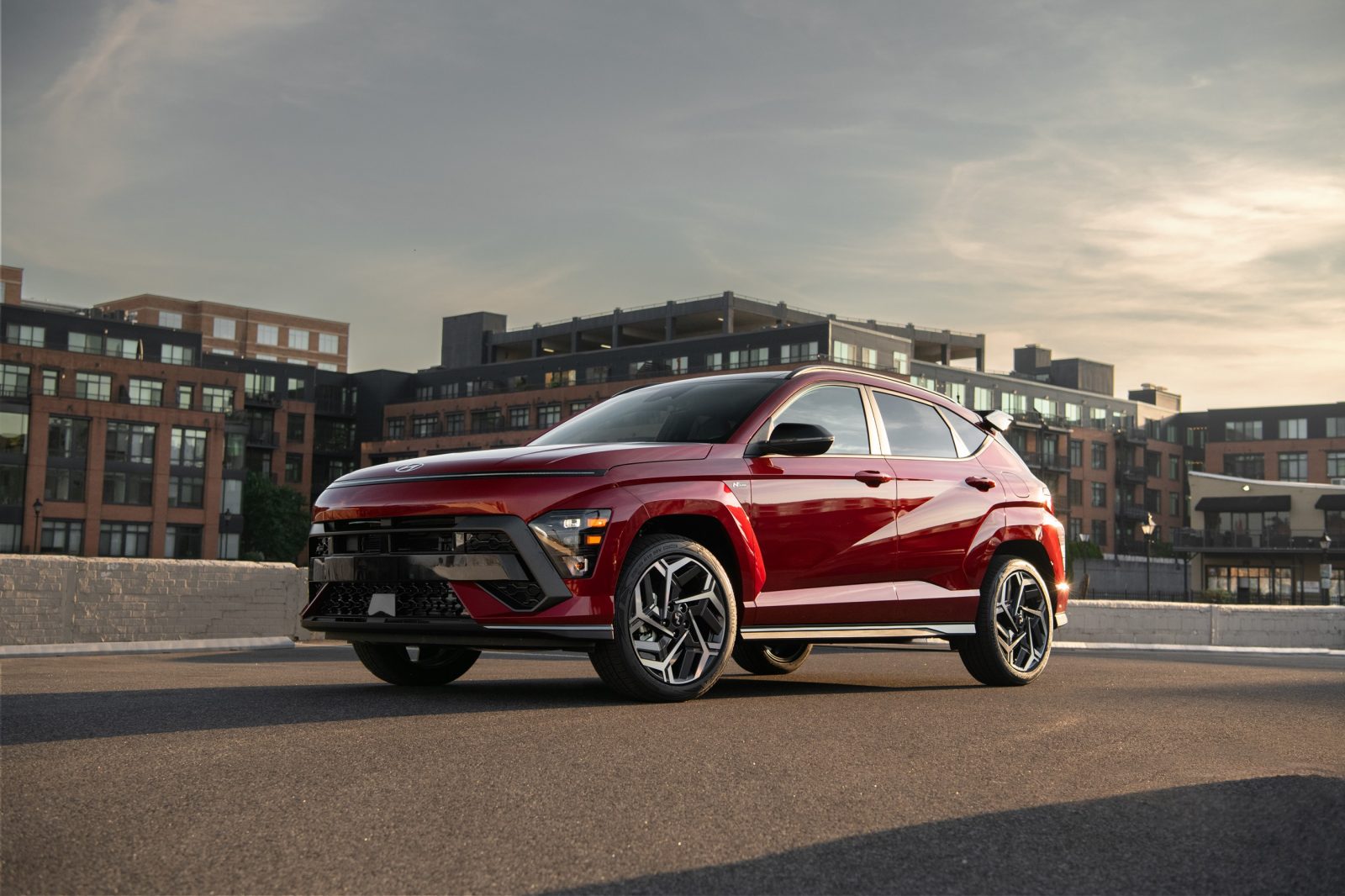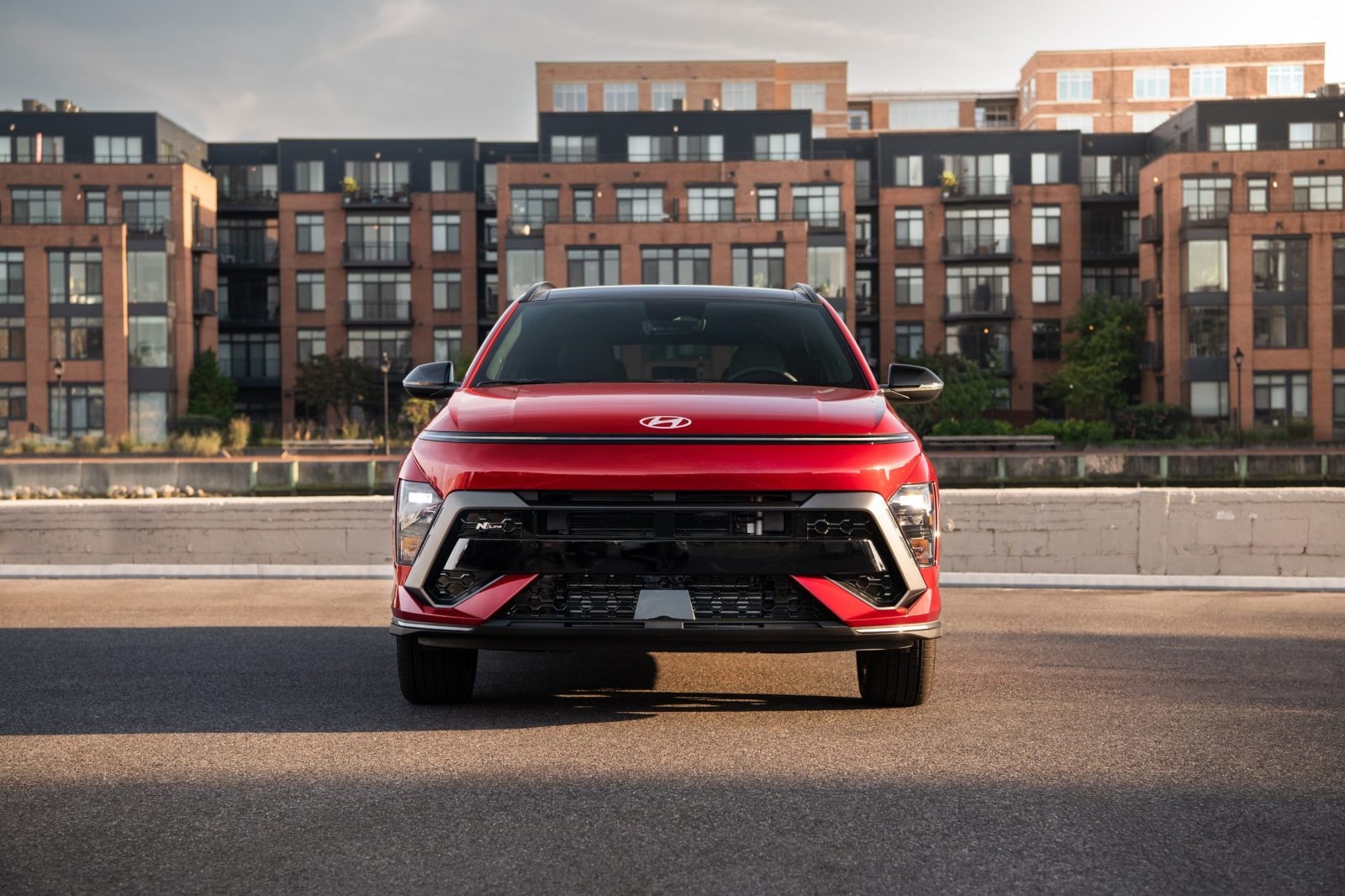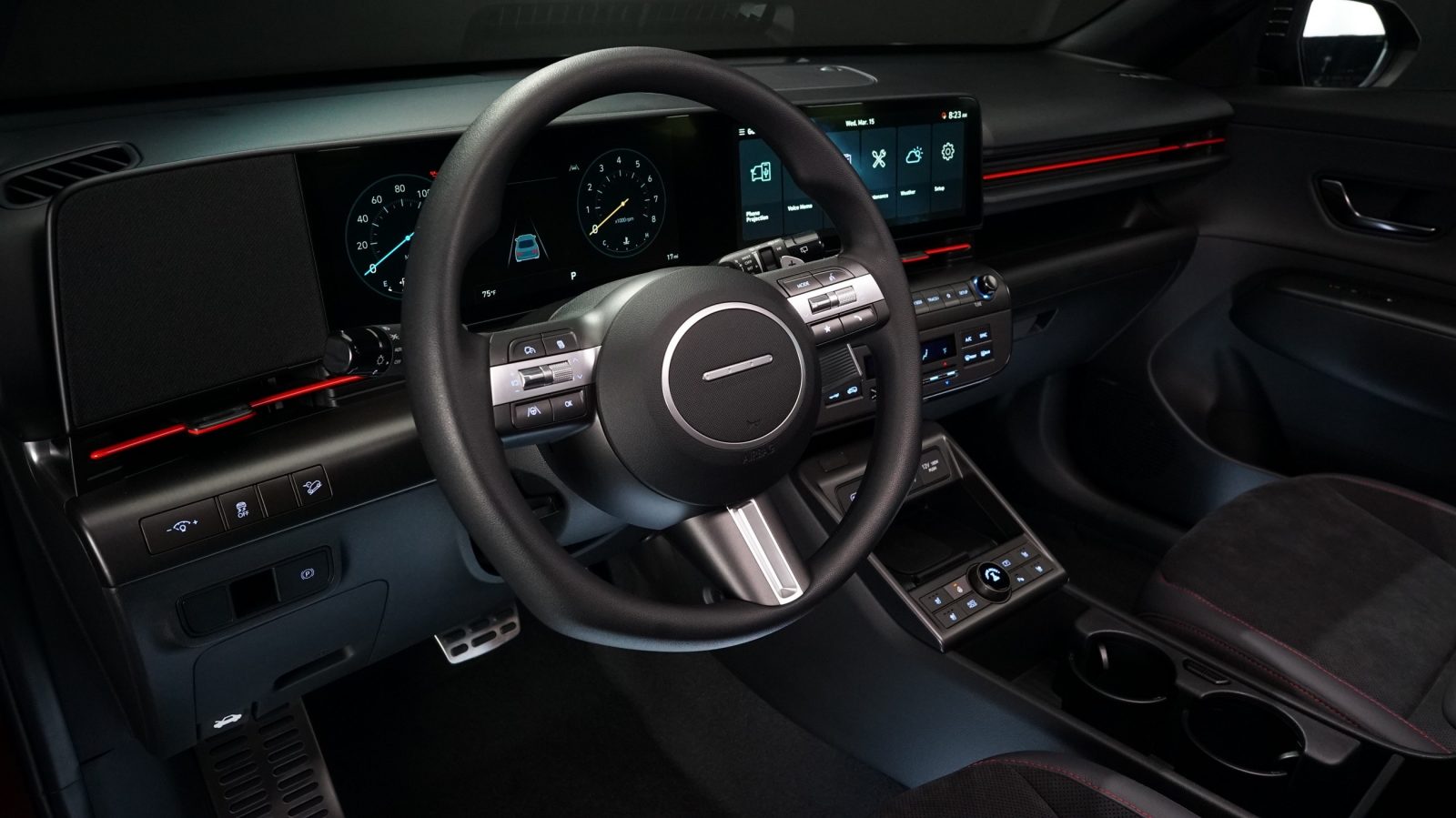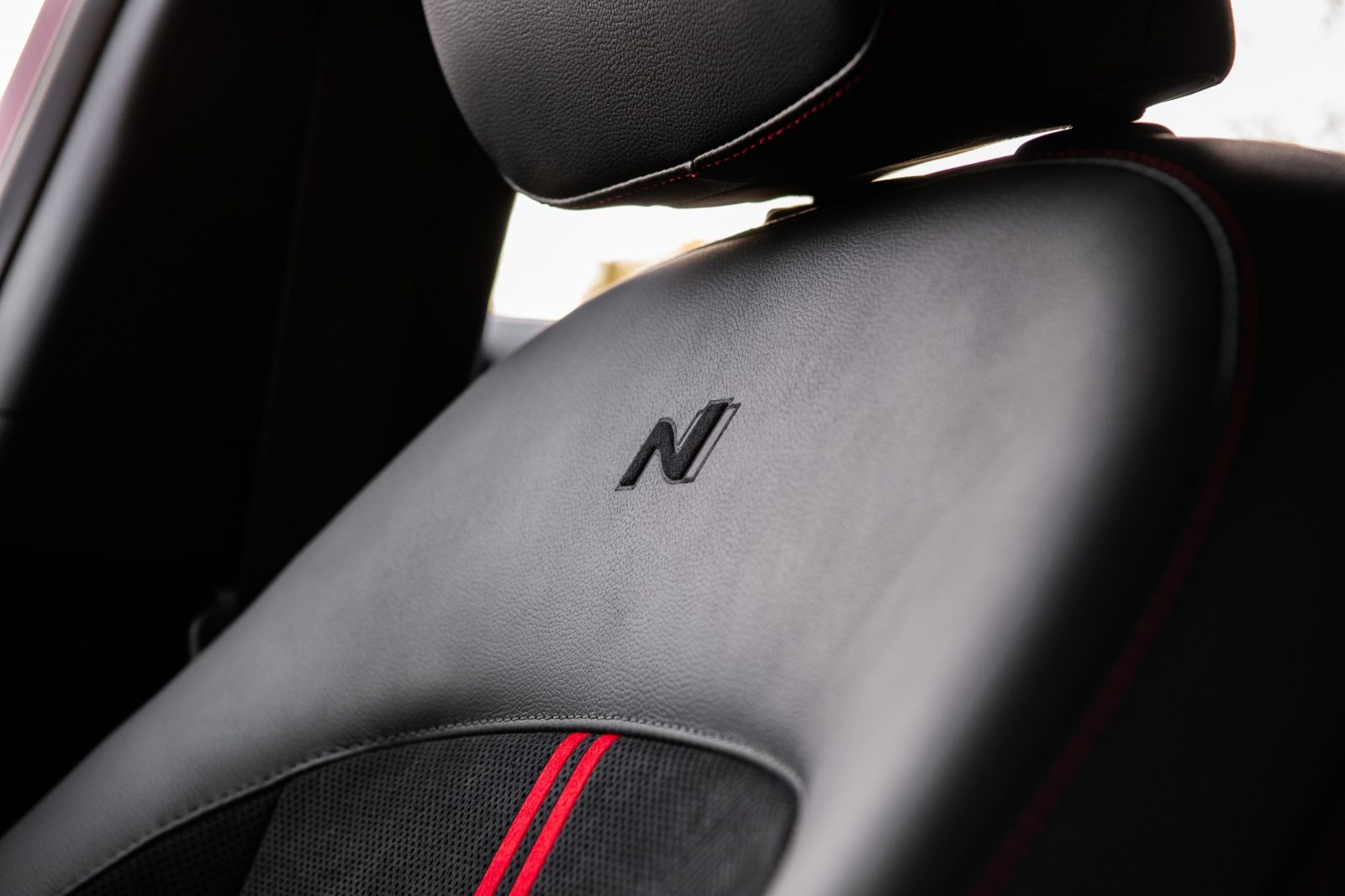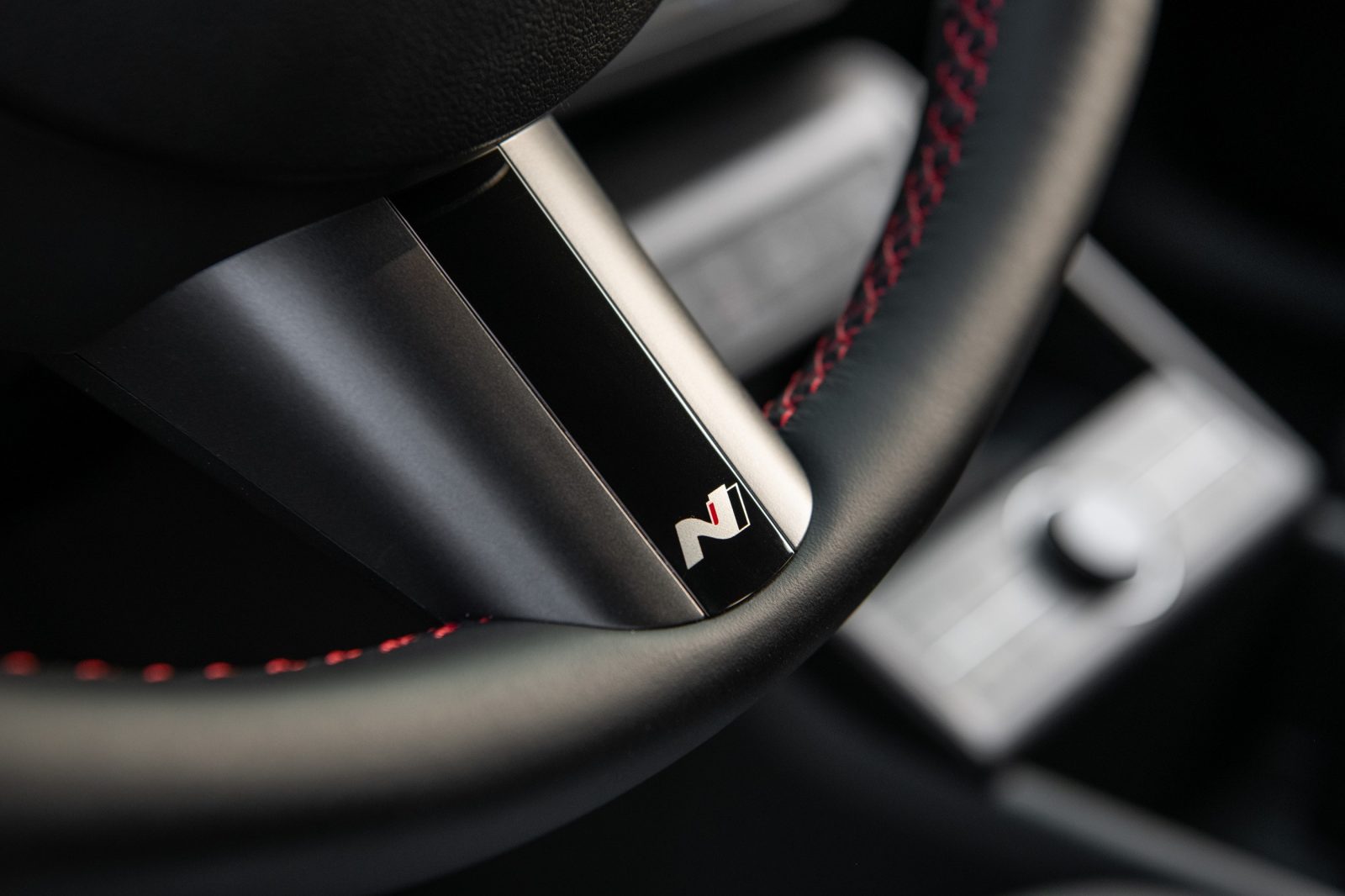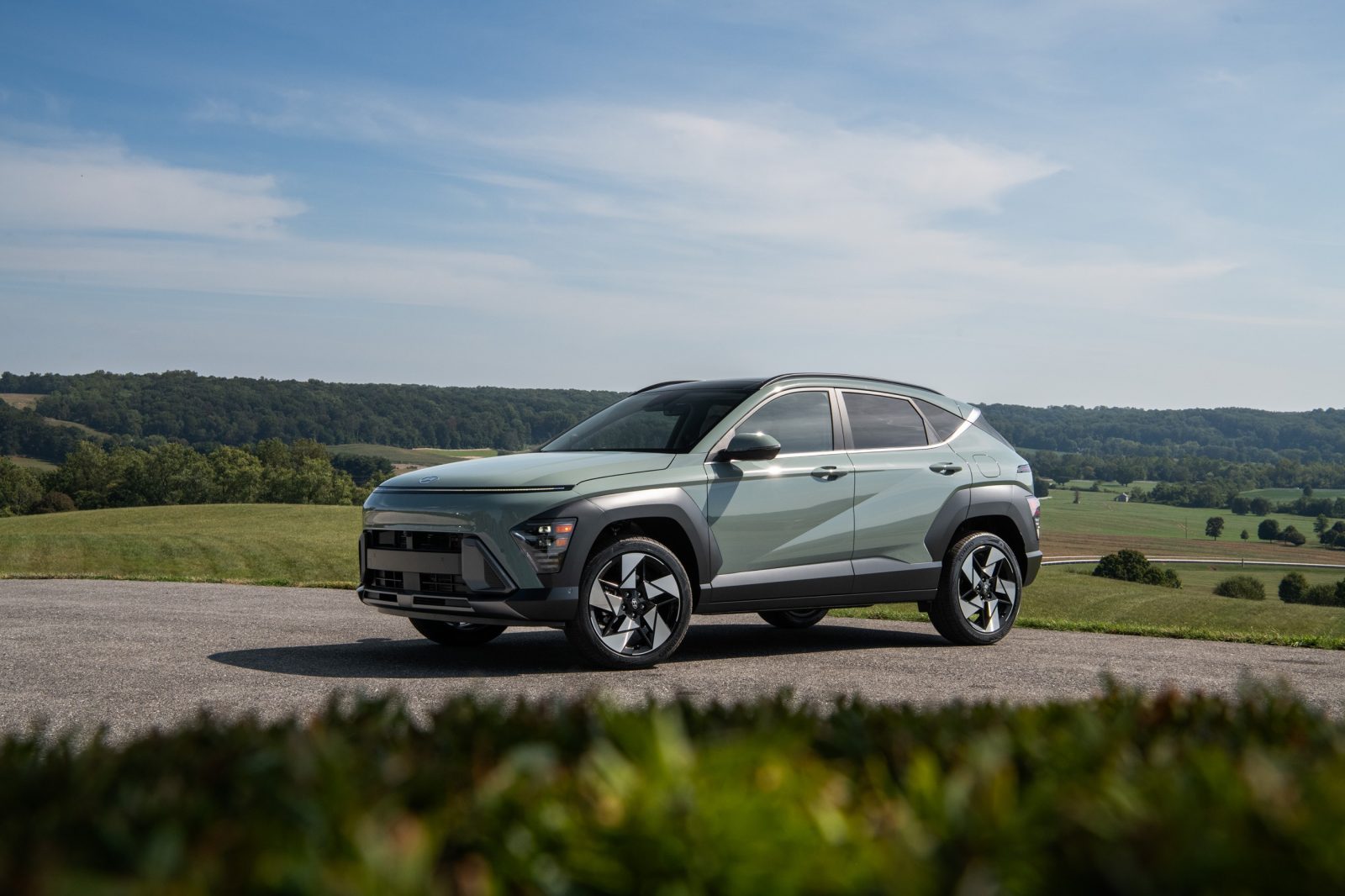The Hyundai Kona is preparing to enter its second generation with more tech, style, and comfort. While the model lineup has shrunk to four models for 2024, the company claims that this simplification of the trim ladder will have more long-term benefits, but does it all add together into one seamless package? To find out, Hyundai invited us to fly out to Charleston, South Carolina to spend some time with the 2024 Hyundai Kona and see if all the pieces fit together in this elaborate jigsaw puzzle.
Kona Goes To The Future For Exterior Update: Is It Too Watered Down?
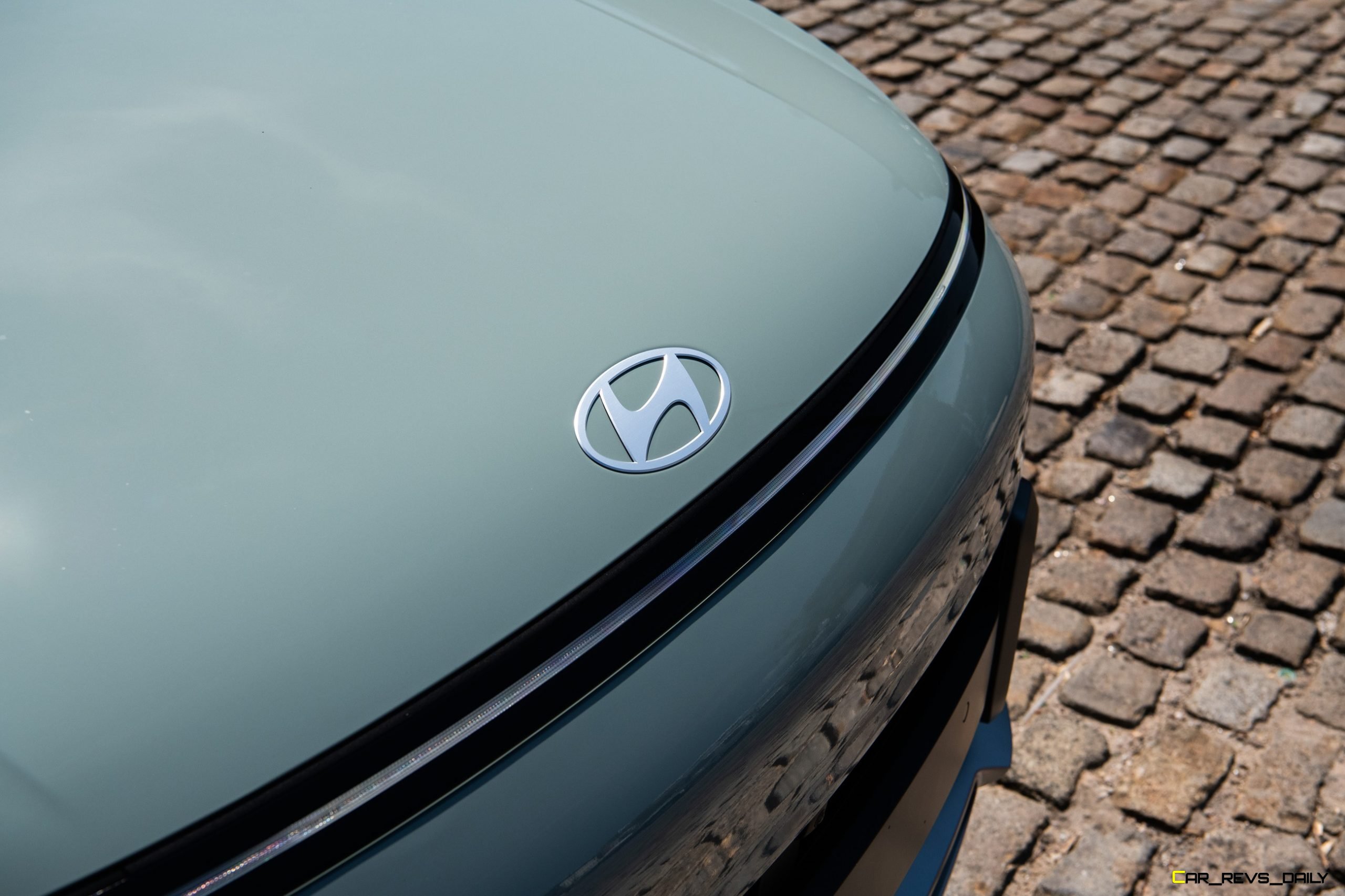
One of the immediate changes that Kona buyers will notice for 2024 is the revamped exterior styling that the Kona is debuting. The outgoing model had a design that was bold and was supposed to be reminiscent of urban smart armor with curves and creases being contrasted by chiseled head and taillights. The 2024 model pitches all of this and instead adopts a cleaner, more organic-looking design than before and was designed from the ground up to be more aerodynamic. The front fascia gets a small wrap-around lightbar that wraps around the upper portion of the front, with the headlights and turn signals being housed in small enclosures in the corners of the front bumper. The rear also gets a lightbar, and the taillights and their associated components are housed in their own sections. The liftgate has also been reworked, and the Kona script and the Hyundai badge have been moved to a more prominent center-mounted position. Hyundai increased the length of the Kona by six inches, with some of that extra length used to enhance the interior room.
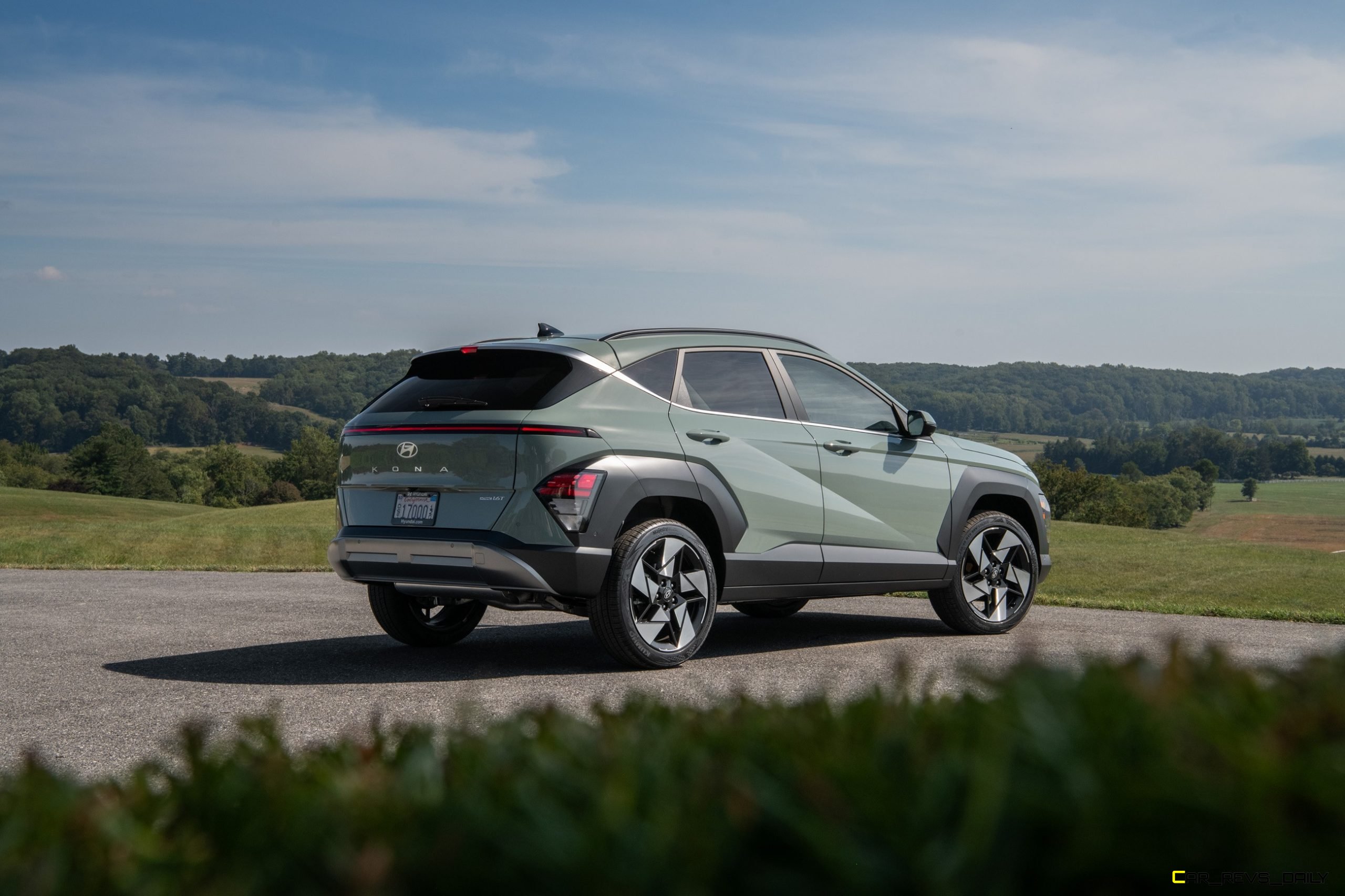
Hyundai also wanted to create more distinction between each trim level, and that’s evident when we looked at the Limited and N Line models that the company had on hand in Charleston (the Kona EV will be entering the U.S. later) with the Limited being tailored towards mainstream buyers. The N Line, on the other hand is geared towards owners who want more performance-focused style in their purchase and could also be a thinly veiled preview of a potential full-on N model in some regards. This particular trim gives the Kona a more prominent roof-mounted spoiler, side skirts, trim exclusive wheels, and a slightly reworked rear diffuser with dual exhaust tips. The N Line, in our eyes, is the trim that makes the best use of the new design and would be the one that we would buy if we were in the market ourselves.
However, a question that might pop up is whether the Kona’s new look is too watered down? With the new duds going in a more mature direction than what we have seen in the past. The answer to that question will largely depend on who you ask, but in our eyes, we think that once buyers get a chance to learn more about the Kona’s inner traits, the style question will be largely moot.
Kona Interior Gains New Tech, Still Misses The Mark On Finer Details
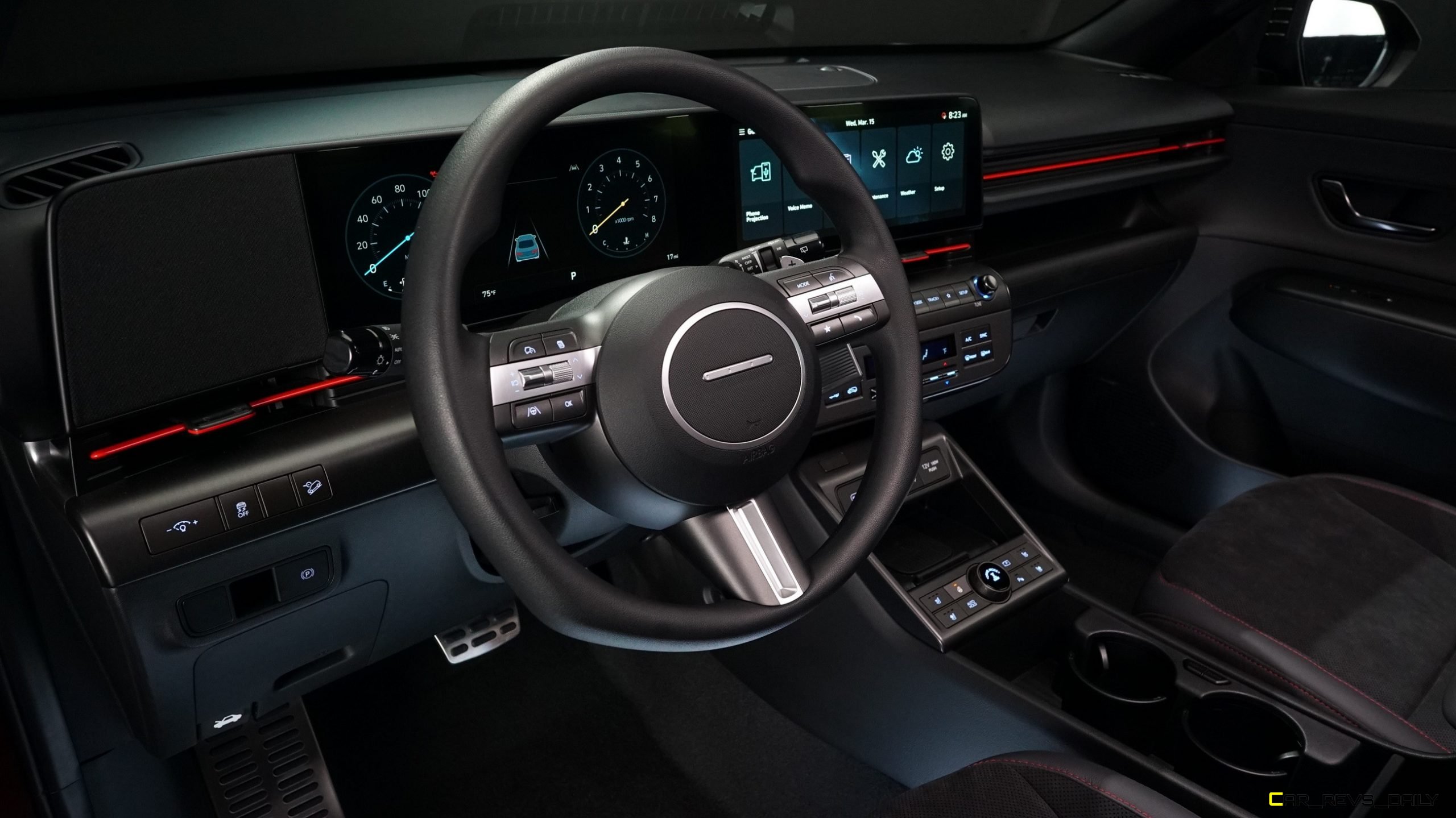
Slip inside the 2024 Kona, and you’ll find that the space has undergone just as dramatic a transformation as the exterior. The gauges and the old infotainment system have been ripped out, with Hyundai engineers replacing them with a pair of 12.3-inch screens. This is similar to what we have seen in Hyundai’s EV offerings. Hyundai claims that the infotainment system, in particular has benefitted from a new CPU and other upgrades that help speed up load times while giving customers more features to work with. One feature that won’t be available right away is Wireless Apple CarPlay and Android Auto, with Hyundai claiming that the duo will be added via an Over The Air (OTA) update. A lone caveat here is that the update will be exclusive to the Kona, so owners of other Hyundai models with the bigger infotainment system will be out of luck in that department while Hyundai figures out how to bring it to those models.
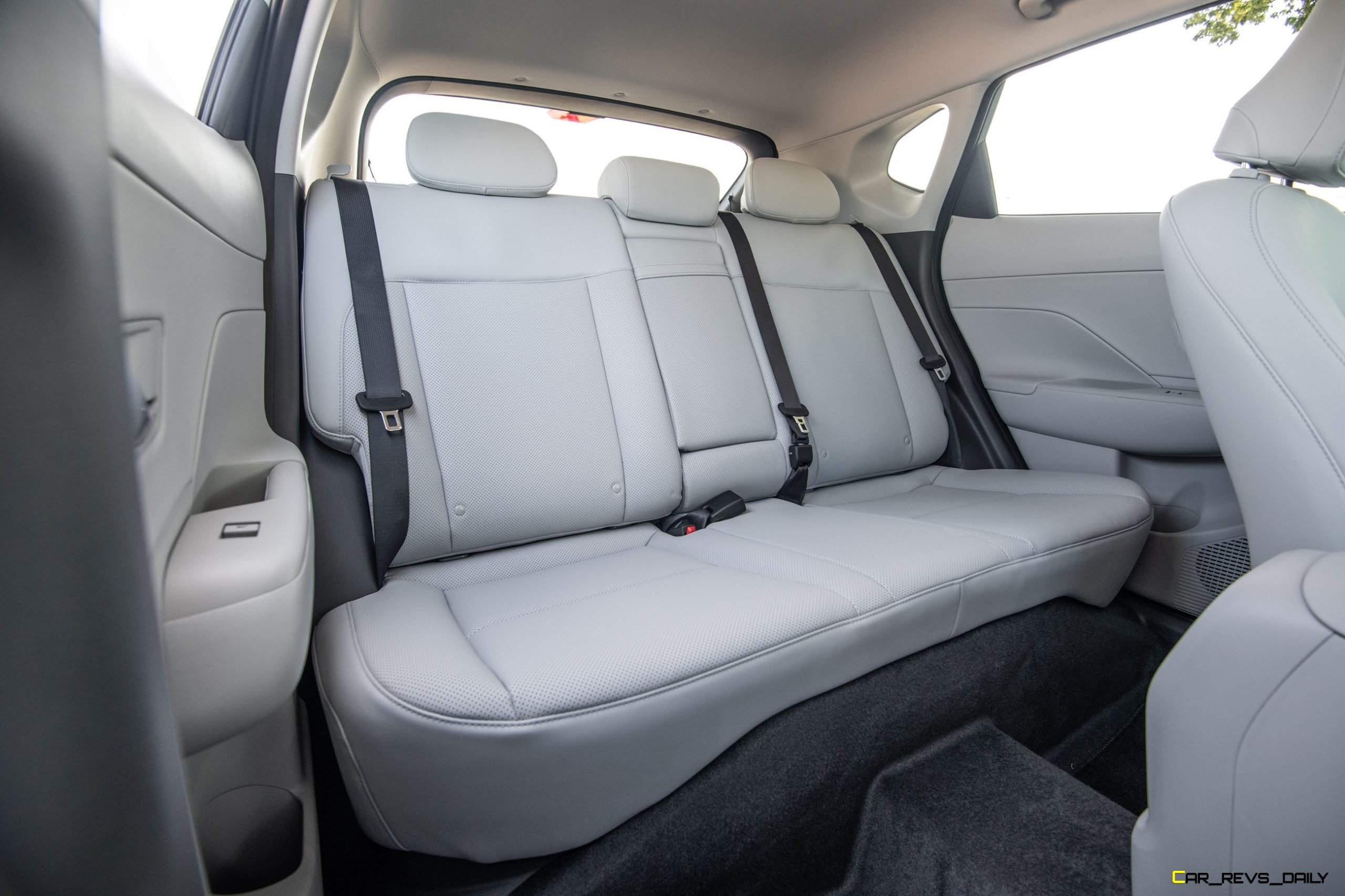
Other tweaks include a new wireless phone charging pad that allows the phone to stand up vertically while charging, but like other pads we have tried out in the past, this one still cannot offer full charging capability to phones in a protective case. The center console now offers more storage thanks to the shifter being relocated to the steering wheel. The relocation process allowed Hyundai to add more storage, including a large space underneath the center console that’s great for bulkier smart devices and even medium-sized bags. Hyundai claims that it slimmed down the front seat backs to add more legroom for taller passengers in the second row, but we didn’t notice much of a difference when we sat back there ourselves. At least the extra length allowed the second row to have higher amounts of foot room, and rear passengers get a set of USB-C charging ports, which is an improvement over the lone port that the outgoing model offered.
Move to an N Line model, and Hyundai’s attempts to provide more distinction are mixed. While we liked the metal pedal covers and the enhanced bolstering in the front seats, the odd circular/square steering wheel brought up traumatic flashbacks of the tiller in the mercifully axed and vintage Austin Allegro. We wished Hyundai would’ve either kept the steering wheel round or just gone all in and added a formal flat-bottomed wheel instead of trying to play both sides. Visibility is also a mixed bag, with the Kona’s good front and side visibility being balanced out by woefully inadequate rear visibility out the back window.
Carryover Kona Performance Adds Familiarity, Makes Us Miss The N Model
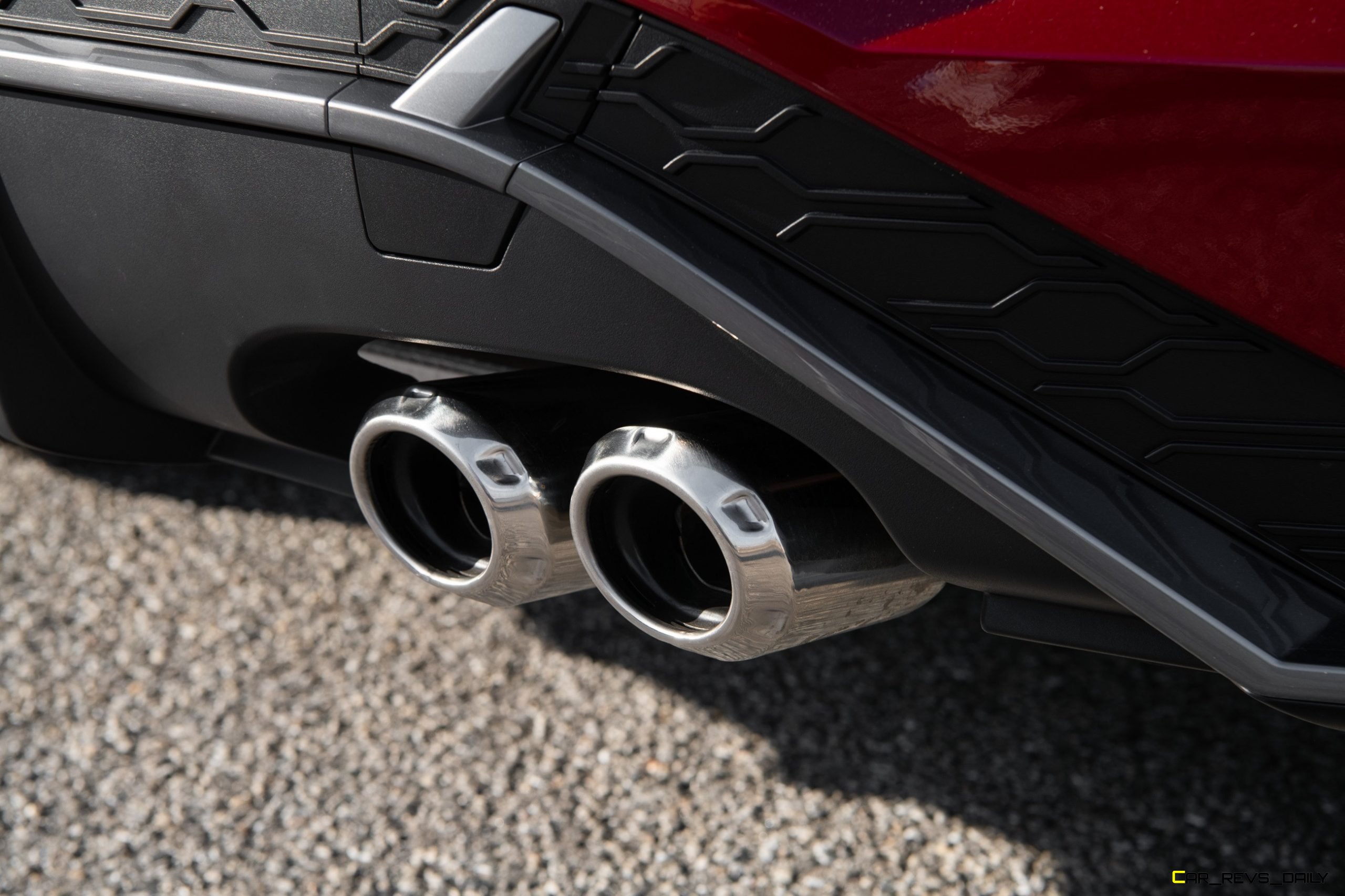
The 2024 Hyundai Kona will eventually offer three powertrains for buyers to choose from, but until the EV arrives, buyers will be limited to two gasoline engines. The base SE and SEL models get a CVT-equipped 147-horsepower 2.0-liter four-cylinder, with the Limited and N Line models we encountered getting a beefier 1.6-liter turbocharged four-cylinder that makes 190 hp. This is a loss of five horses when compared to the outgoing model. Still, Hyundai revealed that this had to be done not only to help fit the eight-speed automatic in (which replaces the seven-speed dual-clutch) but also other upgrades that help improve efficiency and fuel economy.
@carlmalek More #refinement and #technology are always welcome in the @Hyundai Worldwide #2024hyundaikona #hyundaikona but will it help this spunky #cuv stay fresh against a growing pool of rivals? #hyundaisoftiktok #hyundaikona #hyundai #suvs #suvsoftiktok #familyvehiclesoftiktok #familyvehicle #carsoftiktok #cartokhub #cartok #cardujour #fyp
Speaking of that category, the Kona is still within striking distance of many rivals, with the 2.0-liter in the SE and the SEL getting an EPA-rated 28/35/31 city/highway/combined MPG with front wheel drive. Adding the optional AWD system caused those figures to drop to 26/29/27 mpg in the same categories. Go for the 1.6-liter, and fuel economy checks in at 26/32/28 mpg combined with front-wheel drive while AWD drops it to 24/26/29 mpg.
Handling in the N Line model, in particular, felt sharper than older versions we have experienced in the past, but the Limited trim does lose some of its poise. The extra weight the CUV gained versus 2023 is noticeable when taking this model through some of the sweeping roads that rural Charleston had to offer before making our lunch stop at the Roxbury Mercantile (well worth the hike if you’re ever in the area.) The braking was solid and stable, but the Limited has more pedal travel than the brakes in the N Line model.
Value Quotient
Pricing for the 2024 model has gone up by $ 2,000, with the base SE model starting at $25,435. The SEL begins slightly higher, with a base version of that model starting at just over $26,000. Meanwhile, the N Line and Limited models are firmly in the $30,000 range, with these models starting at $31,985 and $32,985, respectively; all pricing is before the $1,335 destination fee is added into the mix.
This pricing puts the Kona firmly in the hunt with rivals such as the Chevrolet Trax, Kia Seltos, Dodge Hornet, Toyota Corolla Cross, and Volkswagen Taos. However, unlike many of those rivals, the Kona has an edge in standard equipment, and the company made sure to give the Kona an impressive array of features even in the base SE model. This helps enhance the KOna’s value in the eyes of some customers, and it also allows the Kona to be in a unique place in the CUV segment. While the segment is rapidly evolving, and the model still needs a few more things to be a true all-rounder, the 2024 Kona is shaping up to be a worthy sequel, especially once the Kona EV makes its way stateside to complete the lineup.

Carl Malek has been an automotive journalist for over 10 years. First starting out as a freelance photographer before making the transition to writing during college, his work has appeared on numerous automotive forums as well as websites such as Autoshopper.com.
Carl is also a big fan of British vehicles with the bulk of his devotion going to the Morgan Motor Company as well as offerings from Lotus, MG, and Caterham. When he is not writing about automobiles, Carl enjoys spending time with his family and friends in the Metro Detroit area, as well as spending time with his adorable pets.

